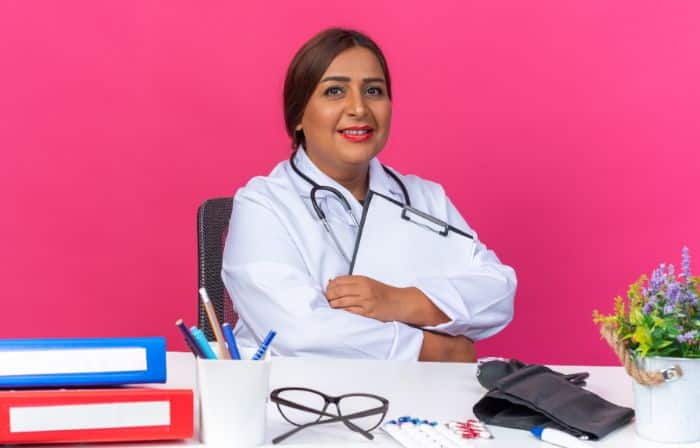Optimizing the Prior Authorization for Improved Patient Access and Healthcare Delivery
Discover how streamlining the prior authorization for improved patient access and healthcare delivery. Learn about efficient strategies and best practices that can transform your healthcare operations.

Imagine a healthcare system where waiting in lengthy queues for assistance is a thing of the past, and healthcare providers are freed from repetitive administrative tasks. The fast-evolving healthcare landscape is transforming patient care and administrative efficiency. Numerous healthcare organizations are experiencing the benefits of streamlined processes and advanced technology. Among the myriad of healthcare management solutions available, how does one choose the best fit? Let’s dive into the details of HealthEase — one of the leading solutions in this space. We’ll explore its features, use cases, pros and cons, pricing, user interface, and much more. To start, we’ll address a common query: what is Medicaid prior authorization and how does it impact patient care?
Start now!
Table of Contents
Prior Authorization to Improve Patient Access and Healthcare Delivery

Exploring Prior Authorization
Prior authorization acts as a checkpoint to ensure that prescribed treatments are medically necessary and align with an insurance plan’s coverage requirements. This step aims to prevent care and make use of resources. However, the PA process can be complex and time-consuming, involving stakeholders such as healthcare providers, insurers, and patients. Despite its goal of safeguarding patient well-being and insurance funds, the administrative complexities often lead to treatment delays, patient dissatisfaction, and added burdens on healthcare professionals.
Challenges Faced in Prior Authorization
An obstacle in the PA process is its administrative workload. Healthcare providers frequently invest time completing PA requests, diverting their focus from patient care. Numerous studies have revealed that doctors and their teams often dedicate hours each week to handling tasks related to authorizations, which can contribute to higher levels of burnout and lower job satisfaction. Additionally, the varying requirements for authorizations from insurance companies introduce an added layer of complexity. Each insurance provider may have criteria for approval, necessitating healthcare professionals to navigate through a range of protocols and documentation needs. This lack of standardization can lead to confusion and errors, making the process more intricate and causing delays in patient care.
Another notable obstacle is the need for more transparency in the authorization procedure. Patients and healthcare providers frequently face challenges comprehending the reasons behind approval or denial decisions. This absence of explanations can result in frustration and a sense of trust in the healthcare system. Furthermore, the prior authorization process often proves to be time-consuming, resulting in delays in treatment that could negatively impact patient outcomes for individuals with medical requirements.
Impact on Patient Access and Healthcare Delivery
The complexities and delays associated with authorizations can significantly affect access to care and healthcare delivery. Patients may encounter delays in receiving treatments or medications, leading to deteriorating health conditions and increased healthcare expenses. Delayed access to care can be especially harmful for patients with illnesses or those who require interventions.
Moreover, dealing with authorization can overwhelm healthcare providers with tasks, shifting their attention away from patient care. This change in focus may result in job satisfaction, increased burnout, and compromised quality of care. Furthermore, more transparency and consistency in authorization decisions can undermine trust in the healthcare system, leading to decreased engagement and adherence to treatment plans.
Approaches to Simplify Prior Authorization Processes

Considering the challenges and consequences associated with the authorization process, several strategies can be implemented to streamline and improve the system. Adopting these approaches can enhance access to services, lessen the burden on healthcare providers, and ultimately enhance healthcare delivery.
- Standardization of Prior Authorization Requirements: Establishing consistent requirements for prior authorization across different insurers can significantly reduce complexity and administrative workload. Collaboration among insurers, healthcare providers, and regulatory bodies is key to standardization. By setting criteria and documentation standards, healthcare providers can navigate the authorization process more effectively, minimizing delays and mistakes.
- Integration of Electronic Prior Authorization (ePA): Integration of authorization systems can significantly expedite the process. ePA platforms facilitate information exchange between healthcare providers and insurers, reducing reliance on paperwork and phone communications. These systems can also offer real-time updates on the status of PA requests, increasing transparency and decreasing uncertainty for both patients and providers. Incorporating PA processes with health records can streamline workflows and improve efficiency. EHR systems can automatically input details into PA requests, saving time and effort in manual data entry. This integration can also help retrieve documentation, ensuring that PA requests are accurate and complete, thereby minimizing the chances of delays or rejections.
- Proactive PA for Chronic Conditions: To address the needs of patients with conditions requiring treatment, proactive PA strategies can be implemented to avoid repetitive submissions. Establishing long-term treatment plans in partnership with insurer providers can ensure access to medications or services without the need for frequent PA requests. This proactive approach lessens providers’ burdens and enhances patient adherence to treatment plans.
- Improved Communication and Collaboration: Enhancing communication and collaboration among all parties involved in the PA process leads to outcomes. Insurers, healthcare providers, and patients stand to gain from communication channels. By establishing avenues for addressing queries, providing clarifications, and resolving issues promptly, misunderstandings can be minimized while fostering an environment centered on patient well-being. Utilizing data and analytics can be beneficial in uncovering patterns and trends within authorization (PA) requests, allowing for interventions. By examining data related to PA denials, approval timelines, and common obstacles, healthcare providers and insurers can pinpoint areas for improvement and implement targeted strategies. Insights derived from data analysis can guide decision-making and drive improvements in the PA process.
Advocating for policy changes is crucial for streamlining the PA process. Policymakers can strive to establish guidelines for PA requirements, encourage the adoption of systems, and address issues concerning transparency and timeliness. Regulatory support serves as a foundation for healthcare stakeholders to collaborate and enhance the PA process.
I'm very thankful for Portiva who I know is looking after my practice while I'm gone the virtual assistants can manage prescription refills, documents they can triage patients and just kind of answer administrative questions and they can handle a lot on their own. But also, they're very good about contacting me if there's any emergency or anything I need to attend to. So I'm very thankful for Portiva they can help almost any provider almost anywhere and it really allows for some good work-life balance as I'm getting to experience right now at my family farm so I'm very thankful for Portiva and I'm very happy to use their services"

Board Certified Family Medicine Physician

Portiva's Virtual Medical Assistant - I have all the support I need. There's somebody checking my email, any patient messages. Patients are still able to schedule and handle any scheduling issues and any kind of billing that needs to still go through. Portiva hands handles it all for me. I have support i have somebody that I can access 24/7 pretty much. It's all very seamless. If somebody has an emergency or needs a medication called in. I know that the va's at portiva will handle that for me.

Board Certified Family Medicine Physician

In conclusion

To learn more about insurance appeal that can enhance your medical practice. Discover more about Portiva and unlock a world of possibilities by visiting our homepage today!
- Managing prior authorization rules
- Prior authorization workflow for better patient care
- Overcoming challenges in authorization denials management
- Seamless monitoring with precertification tech
- Achieving success with prior authorization technology
- Key aspects of preauthorization
- Handling precertification requests and approvals
- Prior authorization and ensuring quality care
- Ensuring care with preauthorization strategies
- Precertification and virtual medical assistants
- Precertification for healthcare administrators
- Common challenges and solutions in precertification
- Managing prior authorization effectively
- Effective strategies for reviewing and updating prior authorization policies
- Supporting the policy of prior authorization
- Handling authorization denials in healthcare
- Addressing challenges with prior authorization
- Submitting prior authorization
- Preventing and addressing authorization denials effectively

